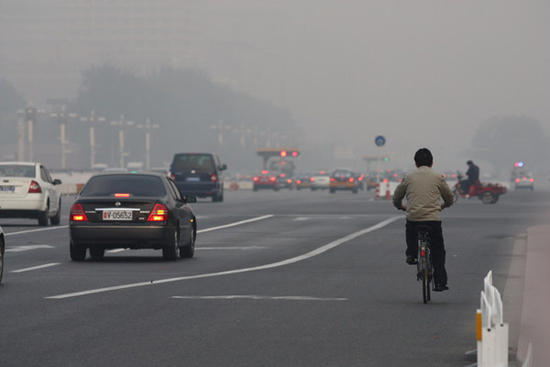China strives to meet air quality standard deadline
 0 Comment(s)
0 Comment(s) Print
Print E-mail Xinhua, October 11, 2012
E-mail Xinhua, October 11, 2012
Positive progress had been made in the implementation of the new standards, Wu said, adding that imbalanced development and inadequate technological preparation still pose problems for implementing the standards.
The ministry will set up supervision teams to inspect the implementation of the new standards and ensure that all 496 monitoring stations will be running by the end of this year, according to the official.
Wu urged local authorities to use multiple channels, including television and the Internet, to publish air quality data.
The MEP will examine the quality of the data that is affected by the new standards next year.
For its next step, China plans to establish a national air quality monitoring network by the end of the 12th Five-Year Plan (2011-2015) period, according to the ministry.
In 2013, monitoring will be extended to 113 cities, with all cities at the prefectural level or above to implement monitoring in 2015.
The government has set up 14 air quality background monitoring stations nationwide. Another station in Xisha Islands in the South China Sea is under construction.
Additionally, a total of 31 stations have been set up to monitor rural areas.
"While promoting the new standards, we must recognize that PM2.5 is just one of multiple indices," said Zhao Yingmin, director of the MEP's science, technology and standards department.
Zhao said attention should also be paid to the monitoring of other indices.
According to Zhao, the MEP is also working on related standards regarding monitoring and evaluating techniques in order to enhance air quality monitoring.






